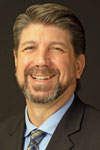Implementing Tubular Daylighting in Commercial Facilities
This course is no longer active. AEC Daily will not report completion information for this course.
Implementing daylight in buildings reduces artificial lighting energy, costs, and CO2 emissions and improves the welfare and performance of occupants. This course examines the benefits of daylight and explains how tubular daylighting devices (TDDs) can efficiently and effectively supply it in an energy-efficient manner, how they optimize all levels of daylight, and how they avoid issues such as glare and heat gain associated with windows and conventional skylights. Applicable credits and features in LEED® v4.1 Building Design and Construction, Interior Design and Construction, and Operations and Maintenance and the WELL Building Standard™ version 2 are noted. The course concludes with several sample commercial installations.
Upon completion of this course, the Learner should be able to:
- Recall the benefits of daylight and its role in our health and well-being when developing sustainable strategies incorporating TDDs and meeting daylighting requirements in LEED v4.1 and WELL v2.
- Utilize TDDs to lower costs and optimize energy use, contributing to the overall building energy performance requirements of LEED v4.1.
- Implement TDDs in any commercial application to provide comfortable, glare-free daylight that improves occupant well-being and performance as reflected in LEED and WELL requirements.
- Specify the appropriate TDD zone technologies for each application to optimize light gain and help meet the ambient lighting level requirements in LEED v4.1 and WELL v2.
Approximately 1 hour. Delivered online, at your own pace.
Presented by Neall Digert on behalf of Solatube International. View the Privacy Policy .
Presenter Information

Name: Neall Digert
Title: VP of Innovation - Kingspan Light + Air/Solatube International, Solatube International
Background:
Dr. Digert is active in the global daylighting design and performance metric development process, serving as director of the Illuminating Engineering Society (IES) from 2011-2013, vice chairperson of the IES Daylighting Committee, founding member and chairperson of the IES Daylighting Metric Committee, codeveloper of the Spatial Daylight Autonomy (sDA) and Annual Sunlight Exposure (ASE) metrics, vice-chairperson of the NEMA Daylighting Management Council, chairperson for the NEMA Daylight Management Council’s Daylighting Symposium Task Group, second vice president of the Fenestration and Glazing Industry Alliance (FGIA) Skylight and Sloped Glazing Council, and chairperson for the National Fenestration Rating Council’s (NFRC) Tubular Daylighting Device Task Group responsible for developing the VTannual product testing and performance standard for optically complex fenestration. Dr. Digert’s technical background encompasses illumination engineering, building energy engineering, and the psychology of perception relative to luminous environments. Dr. Digert holds a bachelor of science degree in architectural engineering, a master of science degree in building energy/civil engineering, and a doctorate in building energy/civil engineering, all earned at the University of Colorado.
